Evaluation of armor protection of the tank Leopard 2A0-A4
Physical thickness of armor;
Integrity of armor protection and weak zones for the tank in 0-30 degrees from the longitudinal axis;
Know the characteristics of special armor and its capabilities in order to protect against armor-piercing and cumulative ammunition.
It is important to note that the tank Leopard-2 was born as a child of many compromises and some solutions are currently considered not very successful. They were developed in 70-s of the last century in order to achieve better fire power (placing the main sight EMES-15 in the gap between the frontal armor units in order to simplify the installation of optics and thermal imaging camera in the main sight) or achieve better maintainability and maintainability. For example, a huge armored gun was designed to replace the entire gun on the battlefield without removing it from the chassis.
In the 80s and 90s, when some of the solutions in Leopard-2A4 turned out to be wrong regarding armor protection (against the promising Soviet anti-tank weapons), the KWS program began and a deep modernization of the tank was developed to the level of 2A5, where the most serious problems of reservation integrity were solved (or improved).
1) Physical thickness of tank armor:
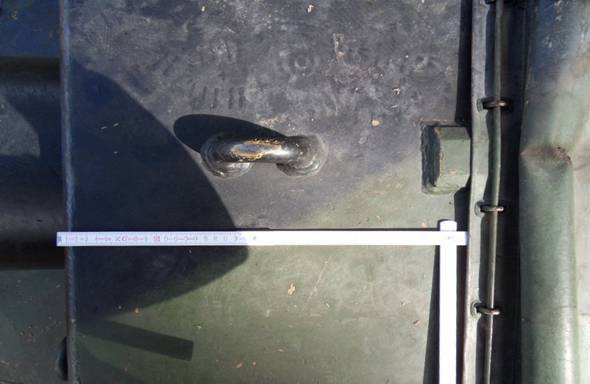
Armored cannon zone
The Leopard-2A4 armor mask has a thickness of mm 420 (42 cm) and it consists of several layers. Its mass is 620 kg. After the armor is placed hinged cannon frame (in German terminology wedge), which is made of lightweight alloy of large thickness. This frame is “girded” with thick metal sheets that form the armored roof and the bottom of the tower. The sides of the turret are covered with thick sheets of rolled homogeneous armor (RHA), in which there are thick rods (axes) for attaching the gun and the mask of the gun at one point in the turret.
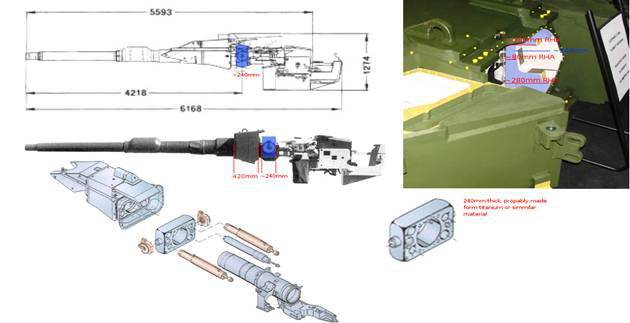
The whole area looks like this.
In fact, the entire layout of armor in the armor zone consists of:
420 mm armor block + light alloy hinged frame 240 mm thick + sheets of rolled homogeneous armor 80 thick and (mainly) 230 mm. Thanks to this solution, the entire armored gun zone is well protected from armor-piercing and cumulative ammunition, in contrast to the previous solution, which did not withstand 3BM15 projectiles or earlier BK-15. The armored helmet of the Leopard-2A4 cannon withstood the main armament of the BMP-1, the 2A28 of the Thunder with cumulative projectiles, and Mutyuk's ballast.
Reservations on the left side of the tower (charging)
The physical thickness of the frontal armor on the charging side is incredible (for the 70-x end) - 860 mm. The back sheet (armor plate ends with a special recess) is made of a sheet of rolled homogeneous armor 60 mm thick of high hardness steel; front sheet, possibly of the same thickness. Between them there is a groove (approximately 740 mm) for a special armored module. This special armor module can be quickly replaced by trimming the top (roof) sheet and replacing the entire module. A similar process took place in 1991 year on M1 Abrams tanks, it took about 30 mines for one module (one box with a special armor module inside).
Such a large thickness was necessary due to the special features of the booking, known as Burlington, a lot of space is needed for this type of reservation. The 860 mm was the thickest in the world until the tank M80A1 entered service at the end of the 1s.
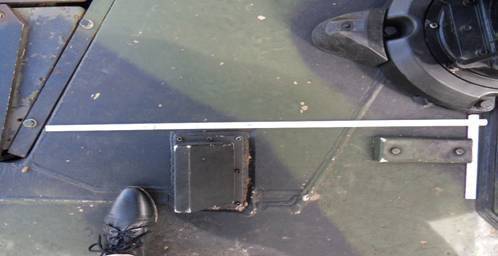
Right side of the tower (commander and gunner)
The tank commander is protected by armor 660 mm thick, armor of such thickness is installed right in front of his face. Currently, this zone (behind the EMES-15 main sight) is considered a weak zone, but that was enough for the 80-s. Armor 660 mm thick was rarely found on most tanks of the time (with the exception of M1 Abrams). But due to the use of heavier armor components it was possible to achieve a similar level of protection for the left side of the tower (from the loader).
The thickness of the armor of the turret in front of the shooter is the same as on the left side of the 860 mm tower, but with a different layout: the first recess in the armor for EMES-15 and the second for WBG-X. Therefore, the total thickness is close to 1100 mm (110 cm) including this groove.
Boca towers in the habitable area
The sides of the tower’s habitable compartment are protected by armor 310 mm thick, that is, for 30 degrees from the longitudinal axis of the tower, this gives almost 620 mm; this was a big magnitude in 80-e years. Currently, these numbers seem to be insufficient and therefore Leopard-2A5 has NERA dynamic protection modules installed on the sides of the tower, and almost all the available upgrades to Leopard-2A4 consist of installing additional modules in order to obtain a higher level of protection for this zone, but the total thickness in this place doubles.
Turret turret
The entire tower turret behind the habitable compartment is protected only by simple rolled homogeneous armor. This decision was made in order to reduce weight. This is the weakest zone in the entire Leopard-2, and this cannot be fixed even now. This is partly determined by the tactical assignment of the tank, since it fights with the enemy in front of him. But at the present time, the entire Leopard 2 turret turn into non-conventional combat operations turns into a significant drawback that only active defense complexes (for example, Thrush, Trophy or AMAP-ADS) can fix.
The Leopard-2A4 tournaments (of course, with the expelling panel) are closed with armor 80 mm thick, that is, for 30 degrees the thickness is 160 mm. The turret of the rear tower is covered with a plate of homogeneous steel with a thickness of just 25 mm:
Tower roof reservation
The roof of the Leopard-2A4 tower is divided along the periscope line of the PERI loader. The frontal part of the roof is made, possibly (the author is not sure), from rolled homogeneous armor 70 mm thick inclined at 7 degrees, which gives the thickness 580 mm. This was (as is the case with a sloping frontal hull sheet) more than enough in 80's. But the second part, perhaps, has a thickness of just 30 mm. This part was really vulnerable to small-caliber artillery shells and cluster munitions, and it was seriously improved by upgrading the Leopard-2 as part of the KWS program.
Frontal Armor
Frontal armor of the hull is protected by a special armor module with a thickness of 640 mm. Only in its lower part, it has a smaller thickness of about 400 mm. This thickness is more than enough for the 80-s, but in 90-s, the entire modernization of Leopard-2 consisted (except for German tanks) in installing additional NERA armor to protect the frontal armor of the hull.
The upper sloping sheet 40 mm thick has an angle of inclination 7 degrees (320 mm homogeneous armor). This inclination of high-hardness sheets was more than enough in the 80s. In this case, armor-piercing sub-caliber ammunition and cumulative projectiles ricochetti. But the emergence of long-core armor-piercing shells in 90 and progress in HEAT cumulative munitions forced developers to close this zone on almost all modernized Leopard-2 tanks (with the exception of the German ones) with thick NERA modules (Leopard-2A5DK, Strv.XXNXXKM 122A2E / HEL, etc.).
Driver's hatch thickness 30 mm
Its design was not perfect, the hatch was vulnerable to 30-mm projectiles and anti-tank warheads, and therefore this element in the Leopard-2A5 tank was completely redesigned. The driver's hatch is the second weakest spot of the Leopard-2 tank.
Hull sides
The sides of the hull Leopard-2A4 consist of three thicknesses (!).
On the right side, the driver has a sheet (zone near the hatch) with a rolled homogeneous harrow 80 mm thick, but only there.
The thickness of the body above the habitable compartment is 50 mm, in the vicinity of the 25 mm suspension.
The hull feed is protected by 25 mm sheets of rolled homogeneous armor.
It is important to note that the Leopard-2A4 is protected by spaced armor consisting of: an external sheet 25 mm thick, a fuel tank about 580 mm thick and the body armor 50 mm thick.
According to the developers of the Israeli tank Merkava 70 mm fuel equal armor sheet thickness 10 mm. That is, 580 mm of fuel work (against HEAT cumulative projectile) as an armor sheet with a thickness of 80 mm. This solution was the best for tilting in 30 degrees, it allows you to have enough layers and enough space to stop the RPG-7 grenades.
Under the fuel tank, the flanks of the Leopard-2A4 are protected by body armor with a thickness of 50 mm and lightweight side screens with a thickness of 12 mm
The striker in the housing is protected from the sides not only by a sheet with a thickness of just 50 mm, but also with heavy bulletproof screens with a thickness of 110 mm
Each module weighs more than 110 kg and consists of two 50-mm sheets of rolled homogeneous armor separated by an air gap.
So, the side protection under the top track line is 100-mm sheets RHA + clearance + 50-mm side sheet.
For 30 degrees, this gives RHA sheets 200 mm thick + clearance + 100-mm side sheet. These sheets of high-strength armor steel were enough at the end of the 70-ies to stop most light anti-tank shells and old artillery shells.
At present, such protection is not enough and almost the entire modernization of the leopard-2 regarding the conduct of asymmetrical combat operations consists of new, much thicker bulletproof screens almost along the entire length of the hull sides.
Physical thickness of armor in general
Integrity of armor protection and location of weak zones for a tank for 0-30 degrees from the longitudinal axis
For the Leopard-2A4, armor integrity is a secondary factor. Firepower, mobility, maintainability and maintainability were the absolute priorities for developers. Many of the solutions for Leopard-2 are given as examples of weak points or poor integrity (continuity) of armor.
The most frequently mentioned disadvantages include:
Very large armored cannon
Armor block behind EMES-15 main sight
The lack of special armor on the turret turret
In fact, ONLY the last example can be called a really weak point, but only for the sides or 15-30 degrees from the longitudinal axis. The developers of Leopard-2 stopped at this solution in order to reduce weight.
The armor block behind the EMES-15 main sight cannot be called the weak link for the 80-s. Why? Because the thickness in this place is 660 mm, which is exactly equal to the thickness of the frontal armor of most 80-x tanks:
In T-64A and T-64B tanks, the frontal armor thickness of the turret is maximum 485 - 496 mm (source: http://btvt.narod.ru/raznoe/bulat-leo2.files/image011.jpg) this is less than armor 660 mm thick .
In T-80B, frontal armor thickness is between 560 and 640 mm (for 30 degrees 530 mm)
In the case of the T-80 tank, the turret armor thickness is mainly 600 mm (source: http://btvt.narod.ru/raznoe/bulat-leo2.files/image011.jpg http://btvt.narod.ru/4 /bars_leopard/80-1.jpg)
Which is again less.
The frontal armor of the T-72B ranges from 600 to 750 mm, for 30 degrees it is 600 - 680 mm, which is almost equal to the thickness of 660 mm in the Leopard-2 tank.
For this reason, the 660 mm armor unit thickness for the Leopard-2A4 tank is not a weak point compared to the 500 - 600 - 680 mm values for Soviet tanks.
But in the 80 and 90, new ATGMs and armor-piercing sabot shells became available, and new improved towers appeared on Soviet tanks (object.187, object.478BE, etc.). Then it became clear that this zone is indeed a serious drawback. For this reason, the frontal armor has been completely replaced under the KWS program, and now the armor on the left and right sides has the same thickness (~ 860 mm).
The armored tank gun of the Leopard-2 tank is 93 cm wide, which is comparable to the size of the armor of most Soviet tanks. This value for them is approximately 83 - 86, see. Therefore, both of these values for Western and Soviet tanks can be compared.
For these reasons, the 80-x and the beginning of the 90-ies (before the advent of 478BE and 188A1 objects) weaknesses for the tank Leopard-2A4 and most Soviet tanks were comparable
Weak zones can be compared in the figure.
Of course, in comparison with the T-XNUMHUD, the Leopard-80A2 tank seems to have much worse performance.
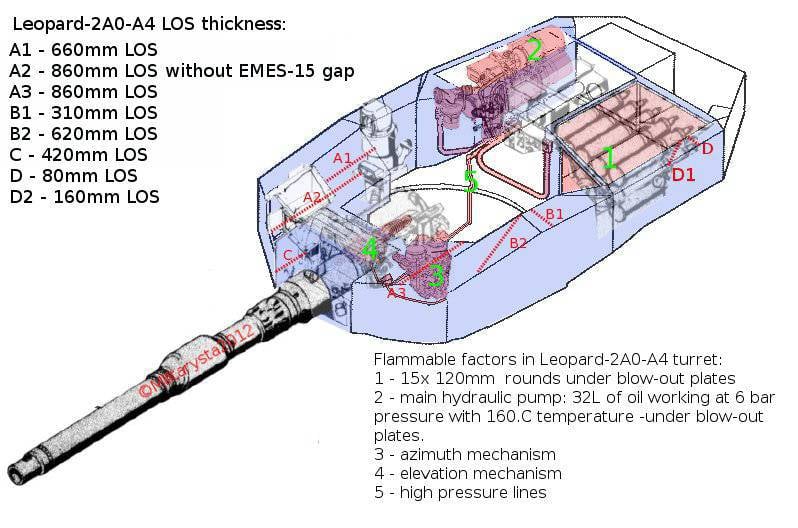
In fact, the Leopard-2A4 tower can be comparable in both aspects: armor integrity, weak zones and hazards (ammunition, oil pumps, etc.) in the picture.
Third aspect. Know the characteristics of special armor and its capabilities in order to protect against armor-piercing and cumulative ammunition
In the case of special armor, we do not know the details. Thanks to the research of Paweł Przeździecki in the UK, we can describe some common features of Burlington-type armor:
British armor was manufactured as a sort of “bulkhead armor” with gaps between the layers; as a sandwich - two thin steel sheets and between them a non-metallic layer.
In its configuration of the 60 / 70 turn-over, the Burlington armor versus a cumulative warhead was 2-3 times better than monolithic steel armor of the same mass and had similar resistance to armor-piercing shells.
The mass efficiency of new booking options (Burlington - multilayer) increased 1,3 - 1,5 times against armor-piercing cores and more than 3 times against cumulative projectiles.

Translation part of 1:
In the second half of the 70-s began to pay more attention to protection against kinetic ammunition. "Biscuits" (Burlington - multilayer), designed for the tank Chieftain mk 5 / 2, could stop 105-mm armor-piercing projectile from virtually zero distance or 120-mm armor-piercing from a distance 1200 - 1300 meters. In the US 1975, “Americanized” armor was successfully tested against 152-mm armor-piercing XM578 subcaliber ammunition and cumulative projectiles (unnamed caliber), which were typical 80's ammunition. A more difficult task was the fight against modern sub-caliber ammunition. During the tripartite testing of weapons (Great Britain, West Germany, USA), one sub-caliber projectile was shot from the German 120-mm smoothbore gun, it pierced Cobham-type armor at a speed simulating an 6000 hit. The heavier armor version, however, was pierced from a distance of all 200 m.
Translation part of 2:
Later, the designers were able to increase the modules' armor resistance. At the beginning of the 70-ies it was reported: “All the technical problems regarding armor, namely resistance to multiple attacks, were overcome. For example, the first module in the front of the case withstood: 9 cumulative attacks (including 5 caliber 152 mm and 4 caliber 127 mm). The second (Burlington - Multilayer module) stopped the 120 mm projectile with a crushable HESH headpiece, followed by multiple blows of cumulative 127-mm projectiles. The third module (Burlington - multilayer) "survived" 3 armor-piercing projectile caliber 105 mm and after this attack (more than two) cumulative projectiles caliber 127 mm. " In July, the 1970 of the Year Biscuit No. 4 (Burlington) with the front sheet of the rolled homogenous armor 50 mm thick resist multiple hits: 105-mm projectile with "zero distance" warhead 152 mm Shillelagh, two cumulative diameter 152 mm and finally, 120-mm armor-piercing with a distance 1300 m. The ability to withstand multiple attacks has become an important characteristic of Burlington armor.
The above information is the latest information about the Burlington armor. In the case of the Leopard-2A4 tank, we can assume or evaluate armor protection.
There are several methods for assessing armor protection, and most of them give similar results in two groups of options (worst and best); the average between both variants gives the following results:
For the tower:
thickness 860-760-620 mm without tilt
(front of the tower, front of the tower for 30 degrees, sides of the tower for 30 degrees)
against armor-piercing subcaliber (in mm rolled homogeneous armor - RHA)
570-510-410 mm
against cumulative HEAT (in mm RHA)
910-810-640 mm
housing for thickness 640 mm without tilt:
about 500 mm against armor-piercing sabot and about 700 mm against cumulative HEAT
Such values should be comparable to the level of 80's ammunition:
Armor penetration is achievable (D) on 2000 m; armor penetration guaranteed (D) on 2000
For typical armor-piercing shells:
3BM-26: L: 440 mm D: ~ 400 mm
3BM-29: L: 450 mm D: ~ 410 mm
3BM-32: L: 500 mm D: ~ 460 mm
3BM-42: L: 460 mm D: ~ 430 mm
and for typical cumulative (HEAT) shells:
9М111М (1983) armor penetration 600 mm RHA;
9М120 (1985) armor penetration 800 mm RAH;
9M128 (1985) 650 mm RHA armor penetration,
9M119M Invar (1992?) 700-750 mm RHA armor penetration
Cornet (1993) 1100 mm RHA armor penetration,
As you can see, in theory, booking a Leopard-2A4 tank was good enough for the 80-s, at least the front of the tower and the hull. This is all estimated for a distance of approximately 1000 meters. On the other hand, Soviet tanks, protected by the heavy dynamic defense of Kontakt-5, were a serious opponent for Western tanks.
Based on materials from the site btvt.narod.ru
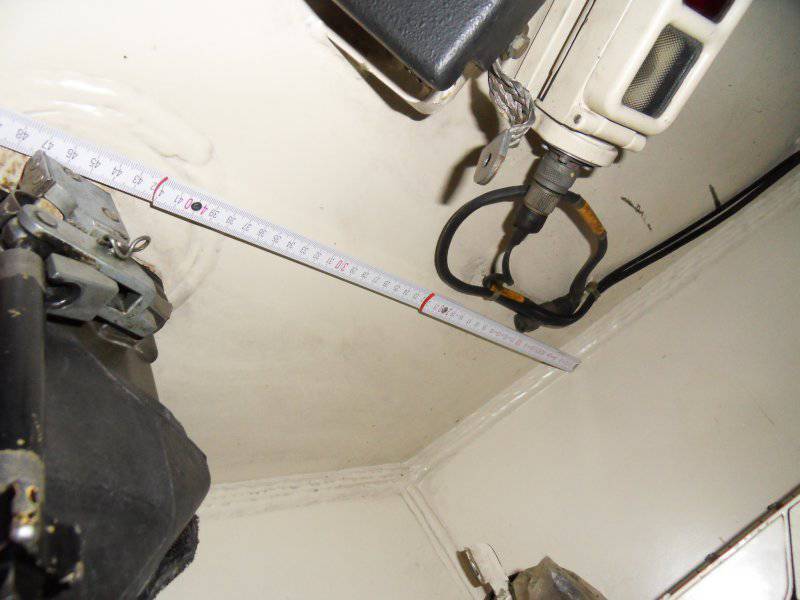
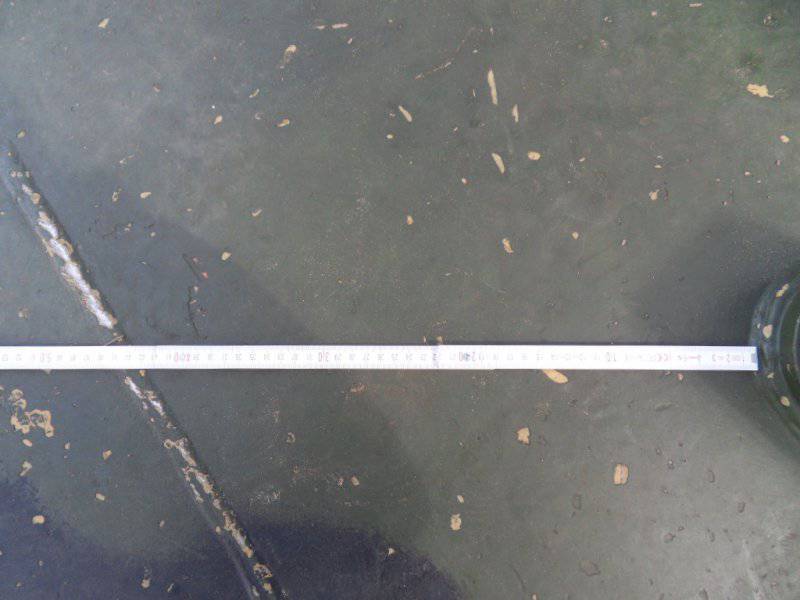
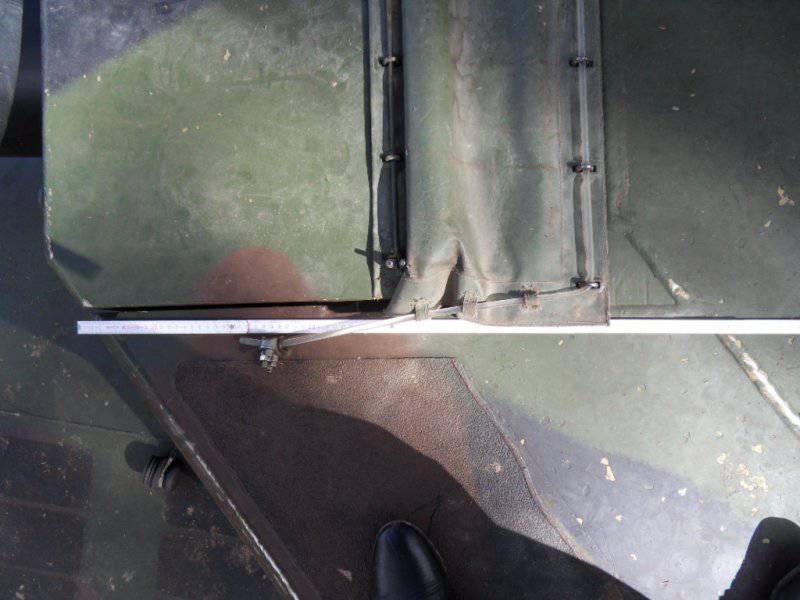
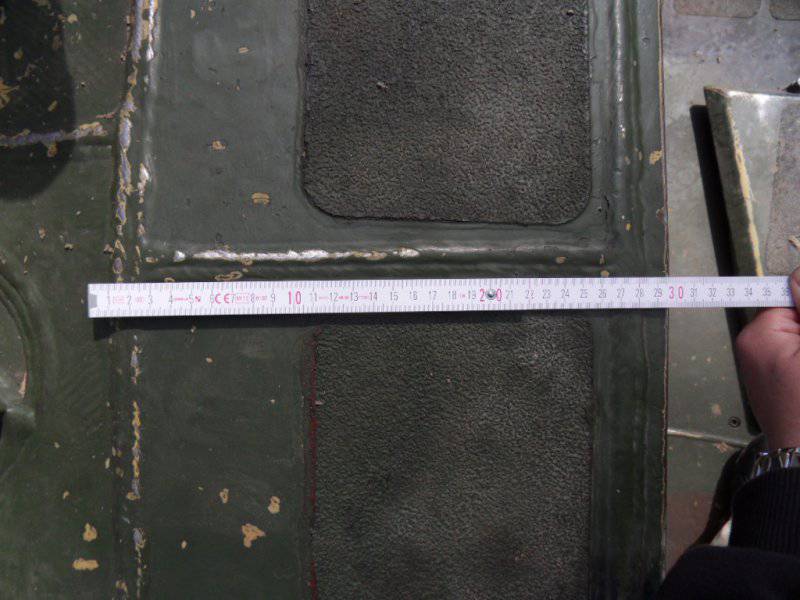
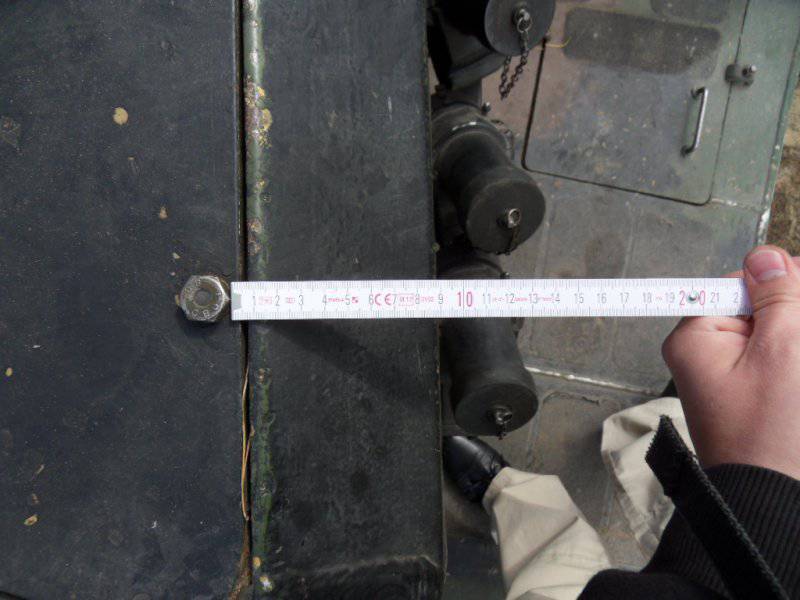
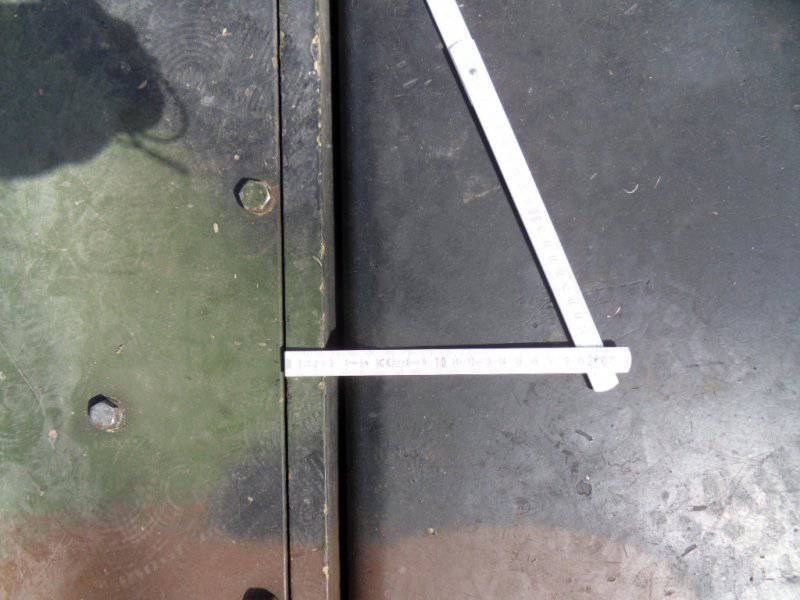
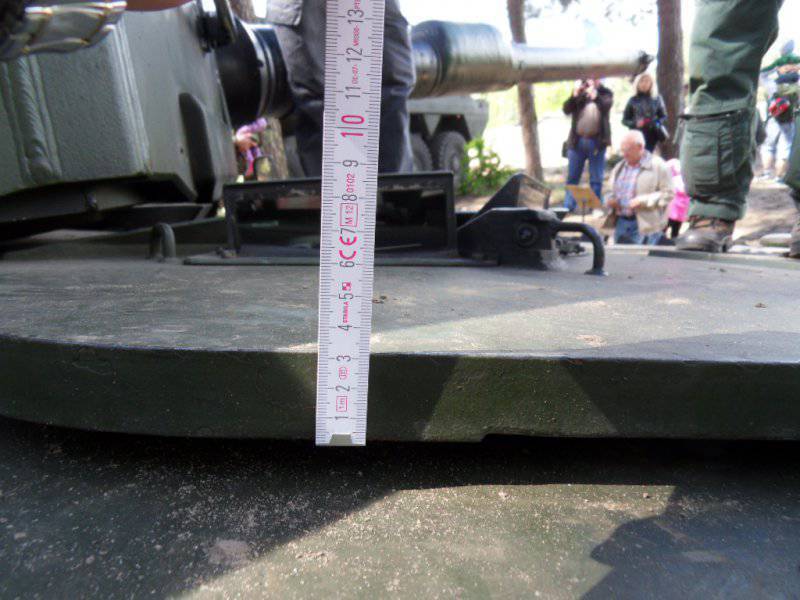
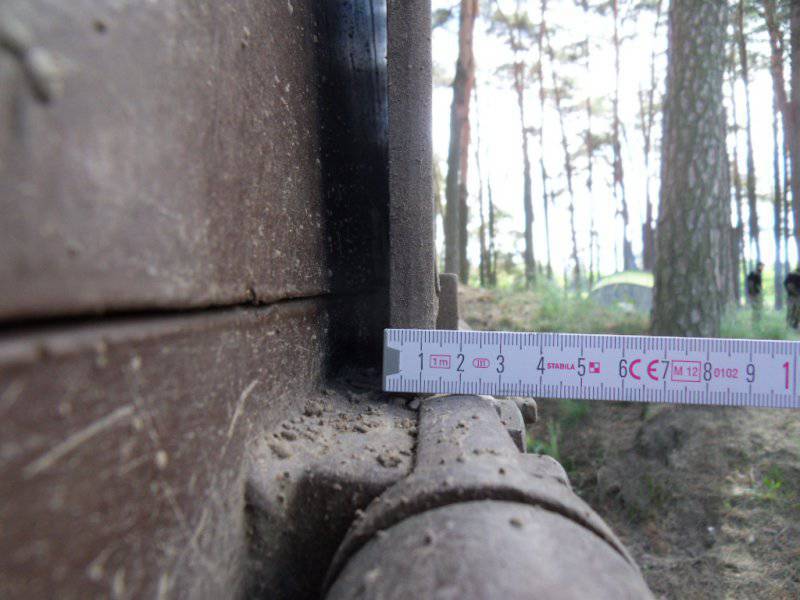
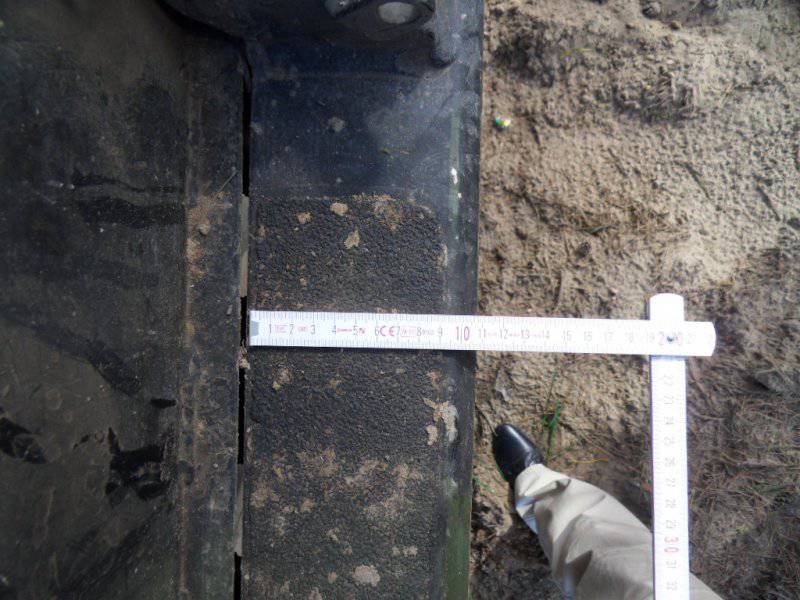
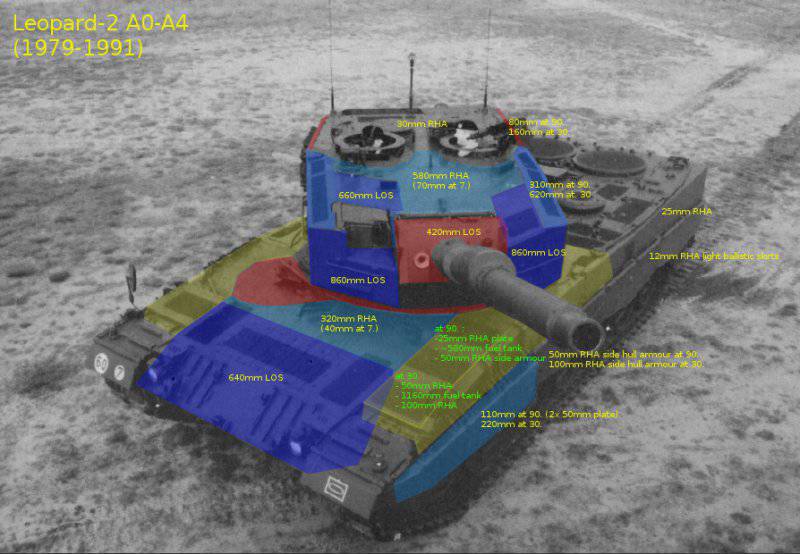
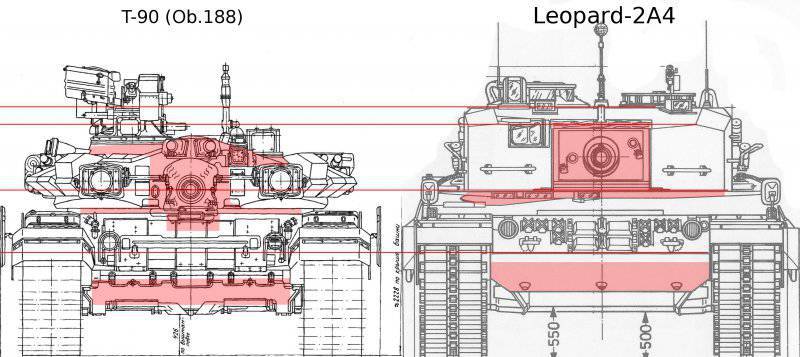

Information